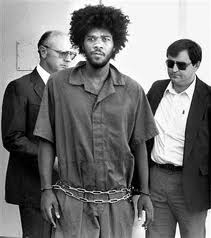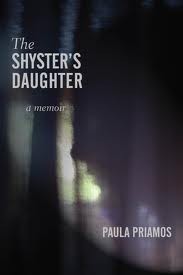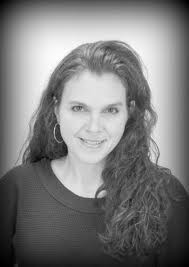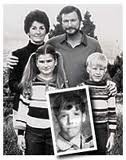
]

You might not remember his horrible story and image, but the Bibliofella does, and so does writer Paula Priamos, my guest last week on that most excellent books show, Bibliocracy Radio. Priamos's ambitious and successful effort to meld two stories happens in a book called The Shyster's Daughter, where she performs the big leap over timidity and skepticism to make her own life story a bigger one indeed. She was a kid in Chino Hills when the notorious Mr. Cooper (in photo above from nearly thirty years ago) murdered a family not far from her own family's home after escaping from the penitentiary down the block. And, more to the point of memory and storytelling, the Priamos family–mother and lawyer father and older sister–did what perhaps a lot of middle-class Southern California families did in June of 1983 when they learned via TV news that Cooper was on the loose: they imprinted on each other some potent and puzzling images.

As it happens,I just heard another terrific memoirist, Robin Romm, give the opening remarks here at the Community of Writers at Squaw Valley, from which I am posting for a few weeks. Romm, author of a sad, wise, lovely memoir called The Mercy Papers, reminded the group assembled here for writing workshops, readings and panels, that creative writing is built on images. And that our response to them is the measure of powerful prose. She said it a lot better, by the way. But I speculate this morning that the effort to understand the power of the image of Cooper (real and imagined) must have caused Priamos to locate and use that dark, awful moment of fear as the theme of a story that's arguably as much about a crooked father and about family and about what the struggle between adult parents does to their kids, their daughter.
William Zinnzer, nonfiction writer guru, said that nonfiction was about “inventing the truth.” So that it might be that Paula P. went back to her memories from childhood in some fascinating journey to find a place where things started making not so much sense, but which were vivid and strong and started her thinking about what was true. Her story is a self-described noir detective memoir, something evoking Nathaneal West or Joan Didion, writ smaller certainly but no less ominously for being the life of an upper middle-class Greek-American horse riding-loving girl from Chino Hills. The evil and duplicity could be everywhere and, sure enough, it turns out that the horses are bought with the profits of Dad's criminal behavior, the teenage sister tries to kill herself, a best girlfriend gets an abortion and Priamos's mother–in what is the psychological broken heart of the story–demands that she choose which parent she will live with. With Cooper still out there.
All of this might be typical So Cal teenagehood, but Priamos, who teaches at Cal State University San Bernardino today and follows her heart to her Dad's death, insists on mystery, and not just about how her disbarred and disgraced father actually succumbs, but on the mystery of how the Cooper-on-the-loose hysteria and the death of a parallel neighborhood family made her see the world as darkly and honestly as she does, with her father “protecting” the family from the mad killer armed with a gun, the story chanted manically on television and radio, and that photo on the front page of the paper. Two stories: Cooper and the Priamos family. And how will she make sense of them as one story? Read the book and find out.

In Full Body Burden, that book about Rocky Flats and author Kristin Iversen's own nutty, doomed family (also with a horrible, tragic father and enabling mother), there's an amazing juxtaposition which I think of again and again as exemplary of solid memoir-making. She recalls taking the required typing test for a job herself as a temp at the Plutonium Factory. This moment of absurdity follows her visit to the hospital bedside of her dying drunken dad, from whom she has been estranged while at the very same moment the nuke lab in the town she grew up in is being taken over by a new contractor. Again, I am always impressed by the affirmation of self (light or dark) in these kinds of seemingly unconnected moments, where the act of remembering, insisting, arguing an emotional truth, of arranging scenes and images in a rearranged context invents something new, dark, beautiful, urgent and instructive. As in, instructions. As in, pay attention!
The Shyster's Daughter, Paula Priamos, Etruscan Press, 260 pps. $16
Andrew Tonkovich hosts the Wednesday night literary arts program Bibliocracy Radio on KPFK 90.7 FM in Southern California.
Follow OC Weekly on Twitter @ocweekly or on Facebook!

